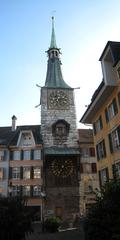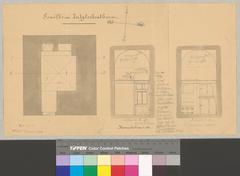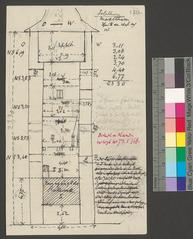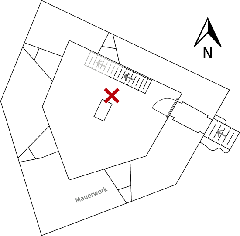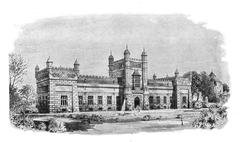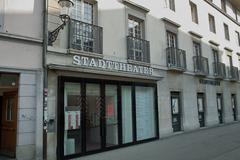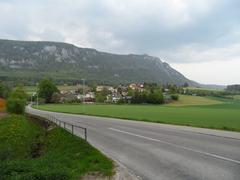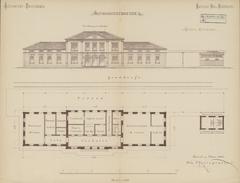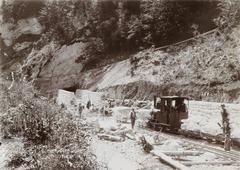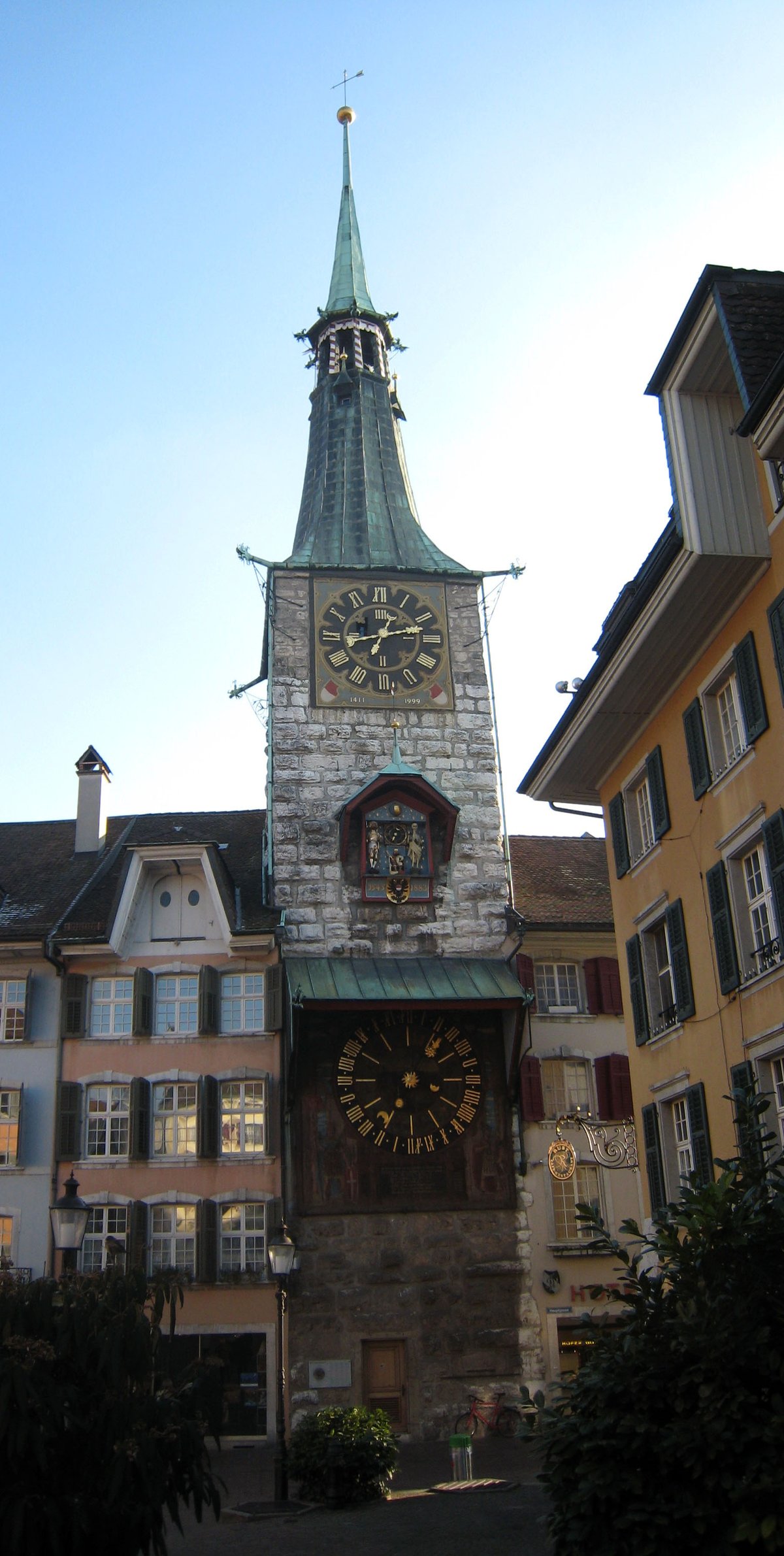
Zeitglockenturm Visiting Hours, Tickets, and Historical Significance in Solothurn
Date: 14/06/2025
Introduction
Nestled within Solothurn’s historic old town, the Zeitglockenturm stands as a living emblem of the city’s medieval and Renaissance past. As Solothurn’s oldest surviving structure, this iconic clock tower, dating back to the early 13th century, has evolved from a fortified city gate to a celebrated civic monument. With its intricate astronomical clock, animated automaton figures, and a fusion of Romanesque, Gothic, and Baroque architectural details, the Zeitglockenturm is both an engineering marvel and a profound cultural symbol. This comprehensive guide explores the tower’s rich history, visitor information—including up-to-date visiting hours and ticket prices—guided tours, accessibility, nearby attractions, and practical travel tips. Whether you’re an architecture enthusiast, history lover, or a curious traveler, the Zeitglockenturm promises an unforgettable journey into Solothurn’s heritage (Swiss Spectator; Stephanie Huesler; Solothurn City Official Tourism Site).
Table of Contents
- Introduction
- Historical Overview
- Visitor Information
- Visuals and Media
- Frequently Asked Questions (FAQ)
- References
Historical Overview
Origins and Construction
The Zeitglockenturm, or Clock Tower, traces its origins to the early 13th century. Initially built as part of Solothurn’s defensive fortifications, this massive stone tower served as both a watchtower and city gate. Its Romanesque-Gothic architecture—with thick walls, narrow windows, and robust masonry—reflects its original purpose as a fortification (Swiss Spectator; so.ch Denkmalpflege, p. 34). Over time, as the city expanded and the need for fortification waned, the tower’s role shifted toward civic functions.
The Astronomical Clock and Automata
A milestone in the tower’s history occurred in 1545, when clockmakers Lorenz Liechti and Joachim Habrecht installed a Renaissance astronomical clock (Stephanie Huesler). This clock, featuring dual dials and celestial indicators, was a marvel of engineering and artistry: the upper dial displays the twelve hours of the day, while the lower shows the night hours, with additional hands for the sun and moon cycles. Below the clock face, a unique automaton group—depicting a knight, a king, and Death—performs an hourly “dance,” dramatizing themes of power, mortality, and virtue (totentanz-schweiz.ch).
Symbolism and Urban Identity
The Zeitglockenturm’s automata and astronomical elements are rich in symbolism. The knight stands for valor, the king for authority, and Death (the Grim Reaper) for the transience of life—a “Totentanz” motif common in late medieval art. These figures, animated each hour by the clock mechanism, remind viewers of the passage of time and the cycles of civic duty and mortality. The tower’s imposing presence and hourly chimes have long regulated daily life, signaled important events, and reinforced Solothurn’s communal identity (totentanz-schweiz.ch).
Restoration and Preservation
The Zeitglockenturm has benefited from regular restoration campaigns, particularly in the late 19th and late 20th centuries, ensuring the longevity of its clockwork, automata, and architectural features. Recent efforts focus on balancing historical integrity with modern visitor access (so.ch Denkmalpflege, p. 34).
Zeitglockenturm Among Swiss Clock Towers
Solothurn’s Zeitglockenturm is part of a broader Swiss tradition of civic clock towers, such as Bern’s Zytglogge (Wikipedia: Zytglogge). Each tower blends timekeeping, public ritual, and artistic spectacle, but the Zeitglockenturm stands out for its Renaissance astronomical clock and symbolic automaton group.
Visitor Information
Location and Accessibility
The Zeitglockenturm is centrally located on Hauptgasse, Solothurn’s main historic street, and is easily accessible on foot from the train station and nearby parking garages. The area around the tower is pedestrian-friendly, with cobblestone streets that may present challenges for visitors with mobility impairments. The tower’s interior, when open for tours, involves staircases and no elevator access.
Visiting Hours
- Exterior viewing: 24/7, as the clock and automata are visible from the street.
- Interior access: Tuesday to Sunday, 10:00 AM – 5:00 PM (last entry at 4:30 PM), closed Mondays and public holidays. Hours may vary during special events—check the official tourism site for updates.
Tickets and Admission
- Exterior viewing: Free
- Interior/guided tours: CHF 8 (adults), CHF 6 (seniors 65+), CHF 4 (children 6–16), free for children under 6. Group and family discounts available. Tickets can be purchased on-site or online.
Guided Tours
Guided tours are offered daily at 11:00 AM and 3:00 PM (seasonally, especially August–October), lasting about 45 minutes. Tours include the clock mechanism, automata, and panoramic city views. Advance booking is recommended, particularly in peak season. Most tours are in German; English may be available on request (MySwitzerland Guided Tours).
Special Events
The Zeitglockenturm features in Solothurn’s cultural calendar, including festivals, processions, and occasional clockwork demonstrations. Check with the tourism office for special schedules.
Travel Tips
- Top of the Hour: Arrive just before the hour to witness the automaton performance.
- Footwear: Wear comfortable shoes for the cobblestone streets.
- Photography: Marktplatz and Hauptgasse offer the best vantage points.
- Combine visits: Explore nearby St. Ursen Cathedral and local museums for a full day experience.
- Accessibility: The square and nearby services are accessible, but interior tower access may not be suitable for wheelchairs.
Nearby Attractions
- St. Ursen Cathedral: Baroque masterpiece a few minutes’ walk from the tower.
- Jesuit Church and Roman Museum: Rich in local history and art.
- Aare River Promenade: Perfect for a scenic stroll.
Visuals and Media
For images of the Zeitglockenturm, its astronomical clock, and automaton figures, visit the Solothurn City Official Tourism Site and Watch Wiki. Use alt tags such as “Zeitglockenturm astronomical clock” and “Solothurn clock tower automata” for improved accessibility and SEO.
Frequently Asked Questions (FAQ)
Q: What are the visiting hours for the Zeitglockenturm?
A: Exterior viewing is always available. Interior/guided tours: Tuesday–Sunday, 10:00 AM–5:00 PM.
Q: How much do tickets cost?
A: Exterior viewing is free. Guided tour tickets: adults CHF 8, seniors CHF 6, children CHF 4, children under 6 free.
Q: Are guided tours available in English?
A: Most tours are in German; English tours may be arranged in advance.
Q: Is the Zeitglockenturm wheelchair accessible?
A: The area around the tower is accessible; the interior includes stairs and is not fully accessible.
Q: When do the automaton figures perform?
A: Every hour, on the hour.
References
- The Clock Tower of Solothurn, Swiss Spectator
- History Undusted: Solothurn, Switzerland, Stephanie Huesler
- Clock Tower (Zeitglockenturm) – Solothurn City Official Tourism Site
- Totentanz Schweiz - Zeitglockenturm Solothurn
- Wikipedia: Zytglogge
- MySwitzerland Guided Tours
- Watch Wiki on Zeitglockenturm
- so.ch Denkmalpflege, official conservation report
- The Travelling Tedaldi: Switzerland in June
Plan Your Visit and Stay Connected
The Zeitglockenturm is more than a historic clock tower—it is the beating heart of Solothurn’s heritage, artistry, and communal rhythm. Its hourly automaton show, stunning Renaissance clockwork, and central location make it an essential experience. For the latest updates, guided tour bookings, and insider tips, download the Audiala app and follow Solothurn’s official tourism channels. Make your Swiss adventure truly memorable by exploring the Zeitglockenturm and the timeless stories it tells.
